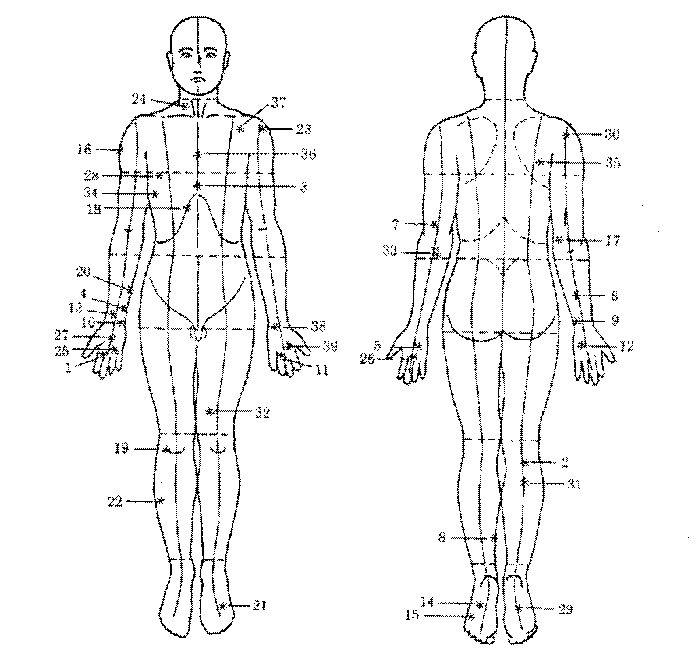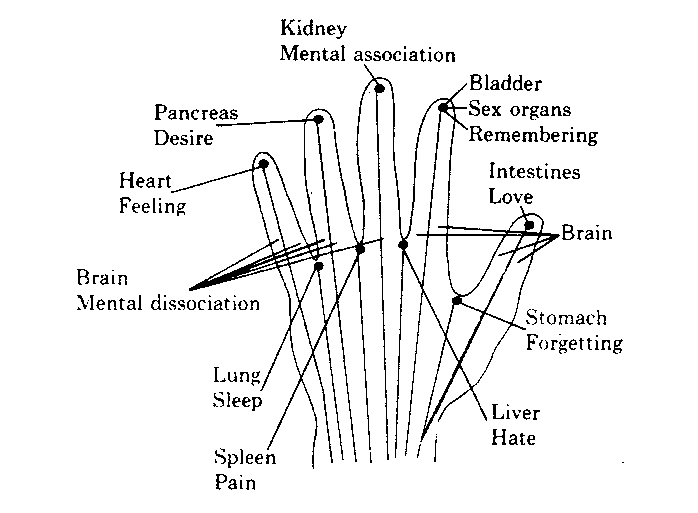
(Dr. Guiseppe Joseph Calligaris)
The following information is an excerpt from a lecture presented in England in 1987 by Hubert M. Schweizer. For more information on the life and research of Dr. Calligaris, please visit the (German & English) website of the European Calligaris Academy.
Guiseppe Joseph Calligaris was born on October 29, 1876, in Forni di Sotto in Northern Italy, where his father was the official community doctor.
It seems that he had a calling to become a natural scientist and therapist. Calligaris studied medicine, received the highest grades and obtained his medical degree in 1901 summa cum laude at the medical facility in Bologna for his pioneering dissertation titled, Thoughts Do Heal.
In 1902, he went to Rome to work as an assistant to Professor Mingazzini, the director of the Institute of Neuropathology at the medical facility of the Royal University. Professor Mingazzini became his spiritual mentor for the next 25 years.
In 1909, Calligaris was asked to be the secretary of the first Italian Congress of Neuropathology. That same year he edited a scientific book of neuropathology, and he moved to Udine, where he set up a hospital for nervous diseases together with his father.
In World War I, Calligaris had to enter the army, where he served as surgeon, and became highly honored for his outstanding knowledge and medical skills. Although he served, he was very critical of politicians and professional military people. He wrote several articles which were critical of the war and the individuals who made a profession out of it. During the war, his hospital was ruined, including his research diaries. Nevertheless, he began again, and wrote dozens of esteemed medical books and articles. Eventually he became he full professor of neurology, and lectured over a thirty year period, from 1909 through 1939.
Calligaris had no ambitions for a university career. He preferred to utilize precious time for research. He published about twenty books, comprised of approximately 20,000 pages dealing with his research into the body-mind skin-reflex chains. The majority of his materials are no longer available. After his death in 1944, they were taken by a secret division of the American government and the Soviet embassy in Bern.
Today his work forms a basis for research at twenty-three Soviet academies.
Calligaris had discovered that certain lines and points on the skin were related to the conscious and subconscious portions of the mind, and even to the enhancing of paranormal abilities. Calligaris called this new research, ‘linear chains of the body-mind.’ He discovered, experimentally, a network of lines — a grid of longitudinal meridians and parallels of latitude on the skin — that have less electrical resistance, are hyperaesthesic, and form geometrical patterns. For example, he discovered squares, which he called ‘windows to the cosmos.’
For over thirty years, Calligaris examined thousands of individuals, and discovered that the system of coordinates and points on the skin of the human body evoked reproducible effects. He proved that everybody could be stimulated to enhance clairvoyance, clairaudience, and precognition and retrocognition, the same way that we learn writing or mathematical calculations.

Calligaris discovered points of intersections of cosmic energies which acted as mirrors, collectors and accumulators. He found that these points could be loaded [i.e. a force applied against the point], for instance, by metal cylinders, and stimulated to better reflect the higher intelligence and to produce an echo of the vital vibrations of the universe.
He believed that our brain just may be a concave mirror for the Universal Consciousness. Of course, there were many people who did not like to hear all of this, and more than once Calligaris was ‘dumped’ by the academic community, as well as by the Church. In 1928, he was repudiated in the Academy of Science of Udine, where he was labeled a crank. He lost his professional seat in the University, the title of medical doctor, his professional card, and the license for his hospital. He eventually developed a heart condition and diabetes, most likely due to his sorrows.
Despite all the resistance, he never lost courage in is struggle for life and the science he believed in, ‘not even for five minutes,’ as he himself wrote before his death. Lonely, poor, and badly affected by the second World War, he died on March 31, 1944, in Villa Magredis at Povoletto.
Today the books of Calligaris are rare. They are bought as soon as they become available, and are regarded as extremely valuable. The majority of his books are written in Italian, and virtually none of the works have been translated into other languages. Today, there are a few Italian academic libraries which still have some of his books, but according to government decree, they are not allowed to lend or copy them.

In several tests before professors, Dr. Calligaris took test subjects, and demonstrated that, when particular parts of the skin were stimulated, they could receive impressions which allowed them to see objects which were out of normal sight.
In order to activate the test subject to become capable of identifying objects on the other side of a wall, Professor Calligaris pressed on a particular point, located on the right side of the rib cage, for approximately fifteen minutes. Touching various points on the anatomy of the test subjects produced different capabilities.
Jules Muheim, a professor doctor of quantum physics in the Swiss Technical University of Zurich writes concerning Calligaris, “In the future, one has to add him [Calligaris] to the greatest scientists of this century. Calligaris found that, with continuous, tender pressure on several spots of the human body . . . that not only the familiar physical feelings such as warmth/cold, tickling, itching, salivation, aches, and other sensations were generated, but emotional feelings including distortion of time and local-moving (space) within cosmic dimensions became possible.
The grid on the body that Calligaris found corresponds to the degrees of longitude or latitude of the earth. Located on this grid are the sensitive circular areas, like islands; areas with a radius of a few millimeters, as well as other geometric forms which stimulate other cognitive abilities.”
The Calligaris technique is used for the diagnosis of radiations of the mineral, vegetable, animal and human realms. Biological organisms can be trained to receive, register, and respond to these radiations through coding and decoding information in the body.
The therapeutic aspect of the Calligaris material is from the manipulation of registered radiations from disharmonious levels to harmonious ones.
The basis of the Calligaris technique is simple and easy to explain: Biological systems send out measurable radiations. These radiations give information about harmony or disharmony from the eminating organic system. This may register as sickness or health.
Of course, there are overlaps between the acupuncture system or meridians, and the lines and points of Calligaris. This is to be expected, considering that there are several thousand Calligaris points and approximately 800 acupuncture points.
Some key points of the Calligaris technique include: The human body contains thousands of spots. These spots are connected with lines, and they appear as if they were centered in the network of lines. These spots are easy to find on the human skin. The Calligaris spots are found by simply measuring the coolest spots or those of the greatest electrical conductivity. These spots have a diameter of between 8 – 12 millimeters and can be verified by relating to two or three other reflexes, which must be felt in order to make sure that the sensitizing procedure was correct.
Dr. Calligaris found that a mental image, the thought-form itself, will cause stimulation within the body. This leads to the basic idea of his doctoral thesis, “Thoughts Do Heal.” There is a mental-dermal effect which physically registers on the body and shows the radiation of the thought-forms or thought-waves. Research has shown that thoughts can be regarded as objects with physical existence. Various Calligaris locations are related with certain organs, and these spots respond and correspond to emotions. So, thoughts can cause emotions and touch organs, which in turn relate to the points on the skin.
Calligaris found that the dermo-visceral-psychological-mental reflex is produced by simply rubbing certain skin areas. Resonance Diagnosis: For good results, a therapist must be well trained and in good mental and physical condition. Stimulation of the Calligaris points takes about ten to twenty minutes, depending on the case. The stimulation itself is provided by cold metal cylinders, the therapist’s fingers, or by a low electrical current. Following the stimulation, the desired effects will be felt by the patient.
